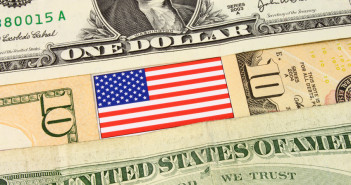The Federal Reserve will begin reducing its $4.5 trillion balance sheet, in a very gradual manner. This has been well telegraphed for months and months. Yellen told us that it will be “like watching paint dryâ€. So, no surprises from the main policy decision.
Markets will move on speculation for the next rate hike. Back in December 2016, Yellen and co. upgraded the dot-plot to three hikes in 2017. In the first half of the year, things seemed to go to plan. The Fed raised rates in March and June. Tightening for September will be in the form of reducing the balance sheet and the last move for the year will be another rate hike, for the third December in a row.
But things became more complicated as the year progressed. Wages remained stuck at 2.5% y/y despite healthy job gains. Core inflation slipped to 1.7% and did not rise from there. Fed officials often expressed surprise and disappointment that inflation is not rising. And if inflation is not rising, there is no rush to raise rates.
With fewer chances of fiscal stimulus and worries about the damage from the hurricanes, the odds for a rate hike in December dropped sharply and so did the dollar.
But things changed lately: inflation did not extend its falls beyond 1.7% y/y, hurricane Irma inflicted less damage than predicted and Trump made surprising deals with the Democrats. All this put some color on the dollar’s face and revived the chances of a rate hike.
Scenario 1 – Dollar: first up and then down?
While there is still time until December and the Fed always tells us it is data dependent, markets will not wait before moving.
First and foremost, the Fed publishes the dot-plot alongside the statement at 18:00 GMT. Here, there is a good chance that they will not alter the path of rate hikes for the remainder of the year. This could boost the dollar. Just getting the reaffirmation that the Fed is still set on raising rates could prove positive.
But then comes Yellen, and she will likely be more cautious. Just by focusing on the policy announcement, the reduction of the balance sheet, markets could see it as not committing to a rate hike in December. And this could send the dollar down.
This scenario could provide a trade opportunity: a window of opportunity to short the dollar between the release of the FOMC statement and the dot-plot at 18:00 and Yellen’s presser that begins at 18:30 and usually lasts one hour.
Scenario 2 – Dovish Fed – Dollar down
Needless to say, this is not the only scenario. The Fed could balance its tightening of the balance sheet by removing the third rate hike from the dot-plot.
For them, it would seem like a balancing act, but for the markets, which have already priced in Quantitative Tightening (QT), the official removal of a December hike from the table would be the cue to sell the US dollar.
Scenario 3 – Upbeat on the economy – dollar up
In this scenario, the Fed sticks to its dot-plot and Yellen sticks to her upbeat view of the economy. If the economy is not doing well, why begin the QT process? Yellen could follow stress the positives of the US economy (better growth in Q2 and Q3) and leave a December hike firmly on the table.
In this case, the odds for a rate hike in December would rise, and the dollar will follow.
Conclusion
The September Fed decision is an important one, with new forecasts, a press conference and high uncertainty about the next rate hike by the Fed. The dollar could go both ways and our leading scenario is a move to the upside before a complete reversal to the downside. But, anything could happen.
What do you think?
More: EUR/USD: Balance Of Risks Into This Week’s FOMC – Barclays



